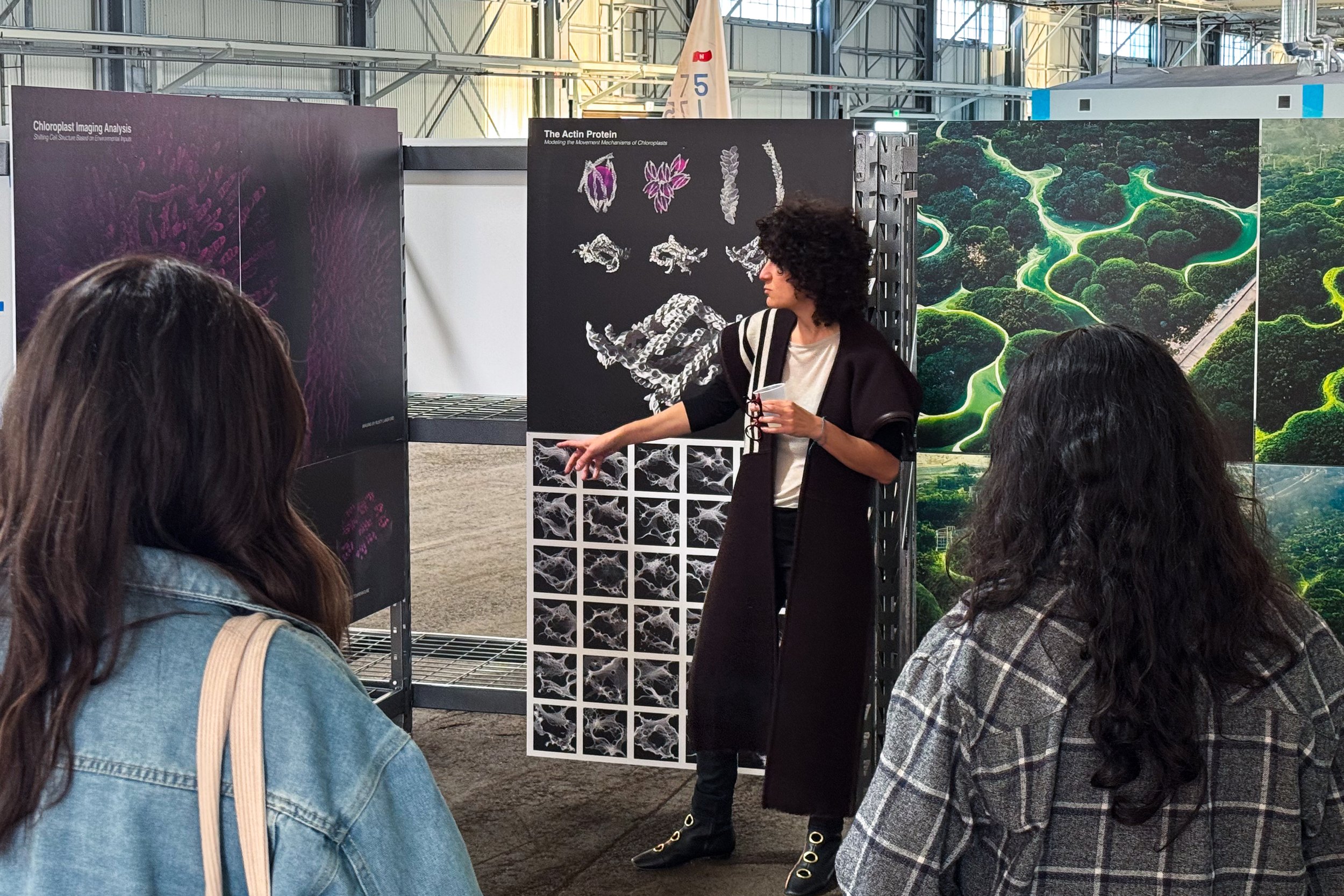Kelper
OYSTER SHELL BIO-CEMENT GROWTH MODULE, 2024
6”
Step into the future of sustainable infrastructure and marine conservation with Kelper, an innovative bio-stratum designed to encourage kelp growth, combat coastal erosion, and restore marine ecosystems. As ocean environments face increasing threats from climate change, rising sea levels, and habitat destruction, Kelper offers a visionary solution that combines biology with cutting-edge design.
Kelper units are modular systems that function as living structures, providing key benefits across multiple scales of application when aggregated: single tank growth, artificial reef formation, and coastal protection + erosion control.
Made at the Landscape Futures Lab of USC Architecture and exhibited at AltaSea at the Port of Los Angeles.
001
002
Brief: For the Landscape Futures Lab Provost Grant, design-research associates were tasked with reimagining our approach to environmental design, drawing inspiration from the microscopic adaptations of kelp to create more resilient and sustainable landscapes.
Approach: Create a growth closed-loop growth module for Giant Kelp, replacing traditional methods of growth that are often unsustainable (PVC pipes, tweed, etc.).
Treatment: We appealed to this idea by creating a bio-cement made primarily from oyster shells, incorporating a return-to-earth end-of-life treatment for our module. Our research-based module is designed to allow proper water flow, texture, surface area, and porosity optimal for the growth and maintenance of healthy kelp forest ecosystems.
Design // Realization
Three Scales
Single Kelper Unit: A Sustainable Alternative to PVC in Kelp Farming
At its smallest scale, a single Kelper unit serves as an environmentally friendly replacement for conventional, unsustainable materials like PVC, commonly used as growth aids in controlled environments such as kelp farms and aquaculture tanks. Unlike PVC, which contributes to plastic pollution, is toxic, and lacks biodegradability, Kelper is crafted from natural, eco-friendly materials that work with the environment.
In tanks or small-scale kelp farms, Kelper provides an optimal surface for kelp to anchor and thrive, fostering a healthier and more environment for kelp cultivation. By promoting natural growth processes in controlled environments, Kelper eliminates the need for harmful synthetic materials, thereby reducing the ecological footprint of kelp farming and other aquaculture practices.
Vertical Aggregation: Artificial Reef Formation
Beyond its application in tanks, Kelper can be vertically stacked in marine environments to form artificial reefs, mimicking the complex structures of natural coral reefs. These artificial reefs offer shelter and breeding grounds for marine life, promoting biodiversity and regenerating degraded ecosystems. By supporting kelp growth and creating habitats for various marine species, Kelper contributes significantly to the health and diversity of oceanic ecosystems.
Horizontal Aggregation: Coastal Protection and Erosion Control
On a larger scale, Kelper units can be horizontally aggregated to create extensive underwater barriers. These barriers absorb wave energy, acting as natural buffers to protect coastlines from erosion and storm surges. As kelp grows on the structure, it further stabilizes the shoreline while restoring vital marine habitats, providing a resilient, nature-based solution for coastal defense.
Exhibition currently on view at AltaSea at the Port of Los Angeles. See here for more information on the Landscape Futures Lab of USC Architecture.












